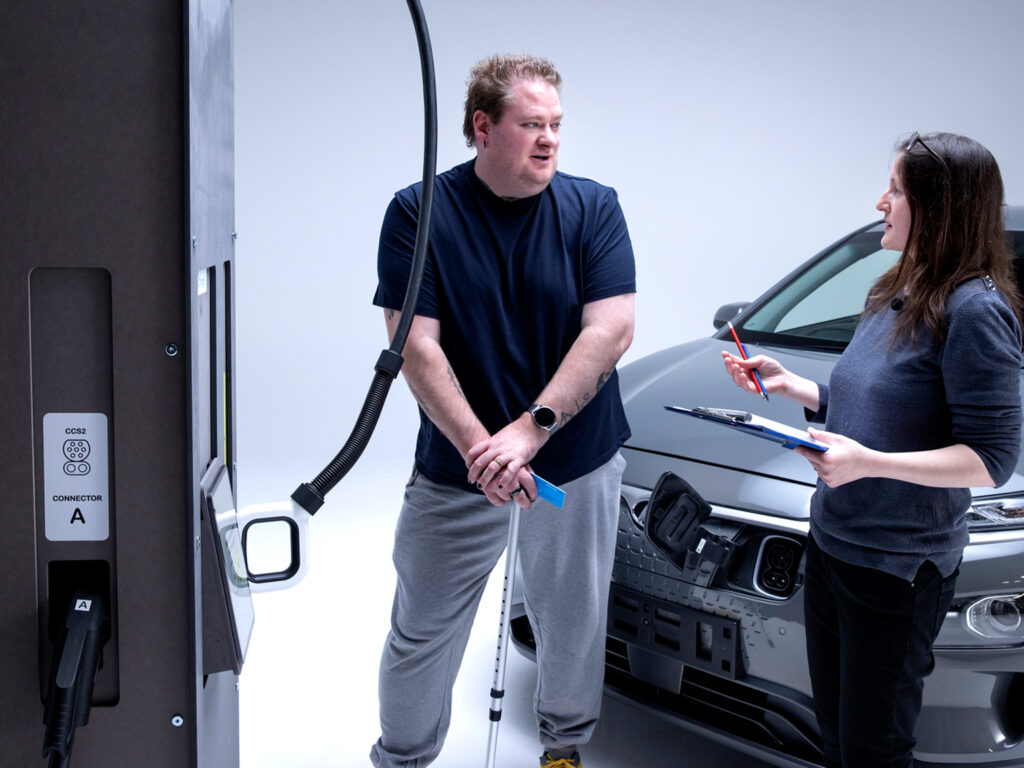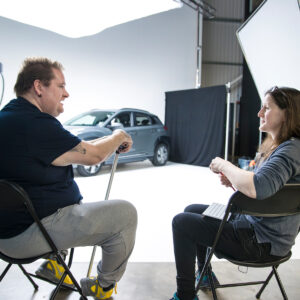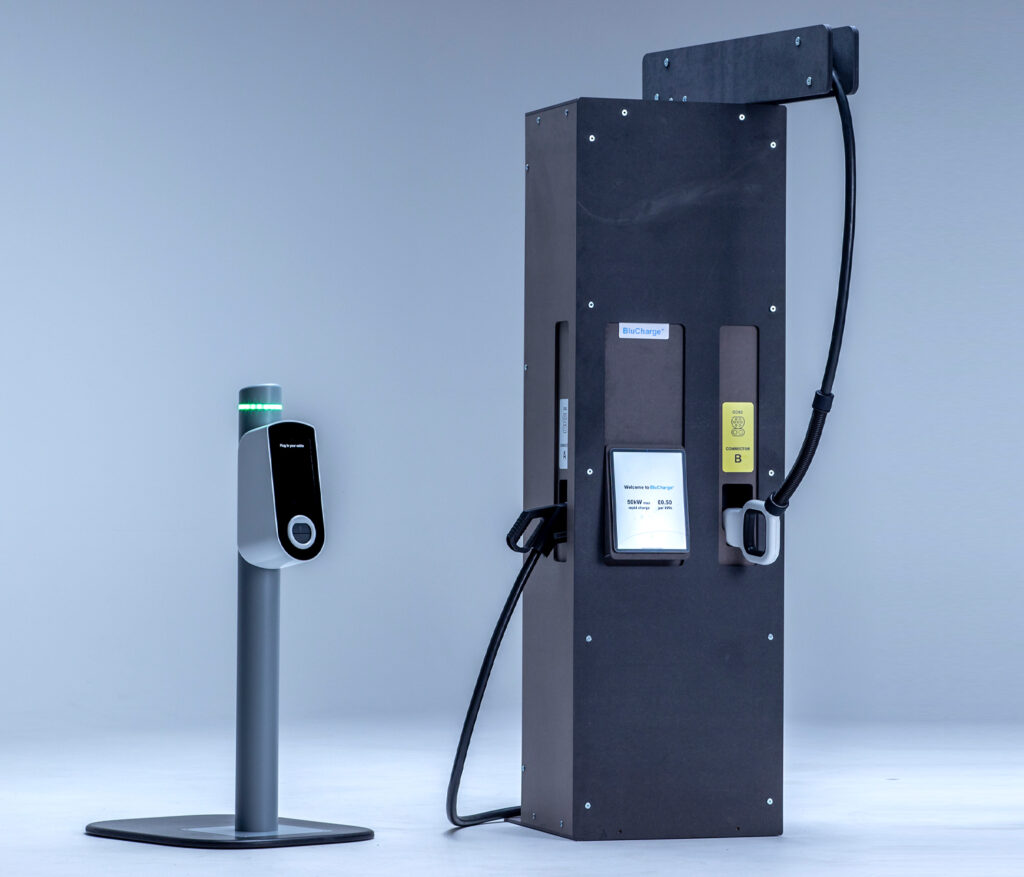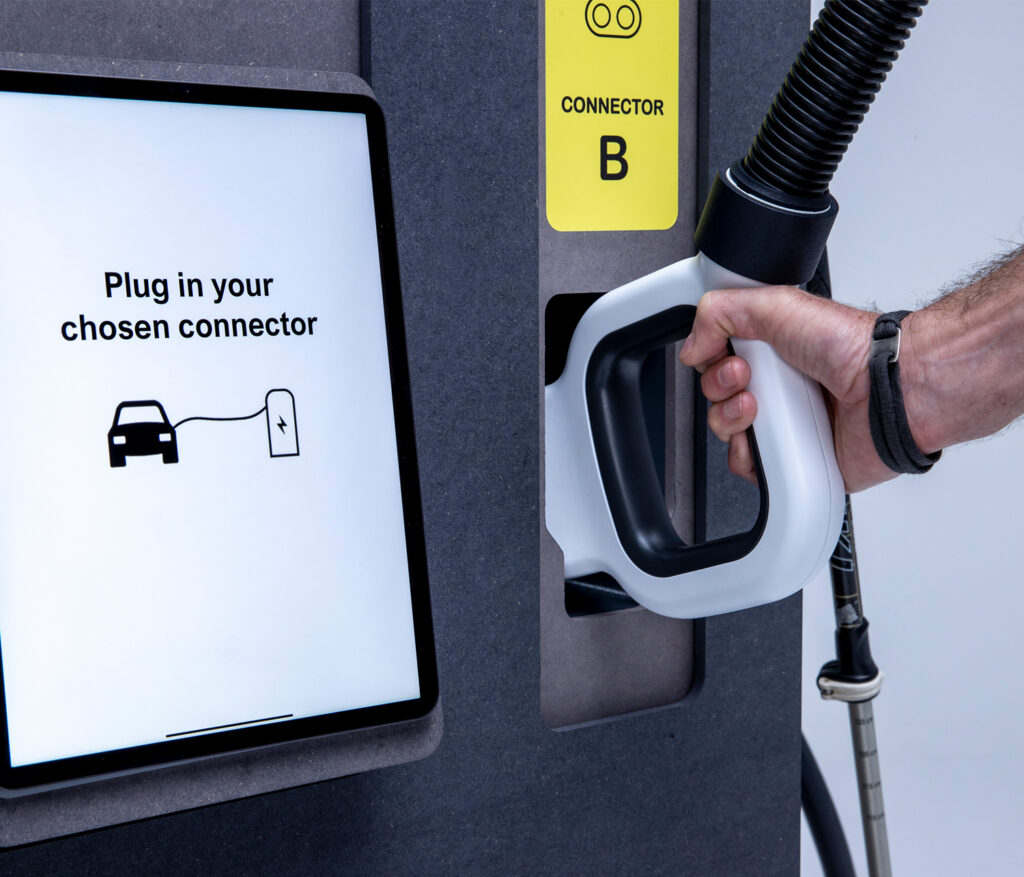How we developed the design guidance
How was this guidance developed, and why are disabled people so important in the design process?
How did we develop this design guidance?
Everything in this design guidance has been directly influenced by what disabled drivers and passengers, and those close to them have told us first-hand.
We are grateful for the feedback from over 200 Motability Scheme customers who shared their views with us throughout the work.
This design guidance was developed by the charity Designability in partnership with Motability Foundation (opens in a new window).

It’s really important to be involved in this process as a disabled person, because we are getting our views heard

Our design process
Here we describe the design process that led to this guidance.
1. Research – Finding out about Electric Vehicle (EV) charging
Our researchers were new to this sector, so our design team learned all about EV charging.

2. Listen – Understanding the challenges
We spoke directly to disabled drivers and passengers, and those close to them, to find out their experiences, hopes and concerns about EV charging and related topics.

3. Design – Developing design concepts
We developed some early design ideas for accessible public EV charging, based on our conversations.

4. Listen – Gathering feedback about concepts
We gathered feedback from people to find out what they liked and did not like about the design concepts, to help us to validate and improve them.

5. Build – Creating prototypes
We finalised the designs based on the feedback, then created physical models (prototypes) to help us describe the design concepts. Explore our charging unit prototypes.

6. Listen – Testing the prototypes and obtaining feedback
We gathered in-person feedback about the prototypes to check if we needed to make any changes, and to find out who could be helped by the different designs.

7. Distill – Creating this guidance
We created this online design guidance to share the rich knowledge that we gathered within the project.


Our design examples
Take a look at the prototype EV charging units that we built in response to our user engagement work

Design guidance
Take a look at our suggestions for making public EV charging more accessible



